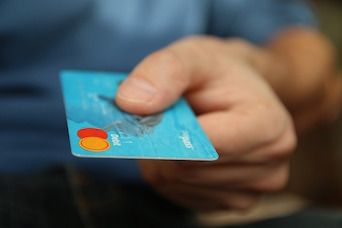Credit Card Debt Statistics and Suggestions
Between the cost of education and opening and operating your own practice, borrowing money is a necessary evil for most veterinarians. If you find yourself overwhelmed by credit card debt, these tips and trends may help you ease the burden.

Most people go through life owing money, and for veterinarians those debts can feel utterly overwhelming at times. Credit card debt is especially insightful for gauging the country's economic health and predicting economic outlooks.
WalletHub, a website that offers free credit scores and reports, crunched the numbers for 2017 and found a few surprising facts about credit card debt in the United States. With 2016 netting some of the greatest credit debt since the Great Recession, this year was bound to face its own struggles.
According to analysts, consumers were off to a good start in 2017, paying down more than $30 billion in debt in the first quarter of the year. But over the next quarter they accumulated $33 billion in new debt.
“WalletHub projects that we will end 2017 with more than $60 billion in new credit card debt,” the report stated. “That would mean we’d owe well over $1 trillion in credit card debt overall.”
RELATED:
- 6 Financial Mistakes That Could Hurt Your Credit Score
- Today's Best Credit Card Rewards Programs
Some highlights from the study:
- The second quarter of 2017 saw the second-highest amount of credit debt since 2008.
- 2016’s final-quarter debt was 130 percent above the post-recession average.
- Charge-off rates — declarations by creditors that an amount of debt is unlikely to be collected — are at all-time lows, leading lenders to extend credit. Analysts believe these extensions will lead to a bubble burst.
- The average credit card debt per household in the second quarter of 2017 was $7,996 — 5 percent higher than a year earlier.
Here are some tips to managing your own credit card debt:
- Stick to a reasonable budget. Once you have a budget in place based on your financial situation, task yourself with sticking to it by creating a priority list for your expenses. Rank your expenses in order of importance, including debt or loan payments, emergency fund contributions and other savings.
- Create an emergency fund. It’s always a great idea to have a safety net to fall back on when unexpected events happen — because they inevitably will happen. Gradually save about a year’s worth of after-tax income by saving a little every month.
- Improve your credit. While more credit may mean carrying more debt, having a better credit score will decrease the amount of interest you pay on that debt. Ultimately, this will allow you to pay down your debt faster. [Click here for tips on improving your credit score.]
- Take the “island approach.” This strategy entails keeping several credit cards for different purposes. Your rewards cards could be used for purchases you’ll be able to pay off by the end of the month. Zero percent balance transfer credit cards could be used to save on finance charges. Using this approach will enable you to get the best possible collection of terms — and alert you to when you’re overspending.
- Tackle your largest debts head-on. If you have balances on multiple credit cards, paying more money on those with the highest interest rate and paying the minimum on the rest will benefit you in the long run. Using this so-called “avalanche method,” once you pay off the card with the highest interest rate, move to the card with the next highest rate until all the debt is paid.
- Reassess where you are in your career. Sometimes, the best budget planning means advancing your career or simplifying it. If you feel overwhelmed by debt, look at your job situation as an opportunity to gain new skills or move up in your field.